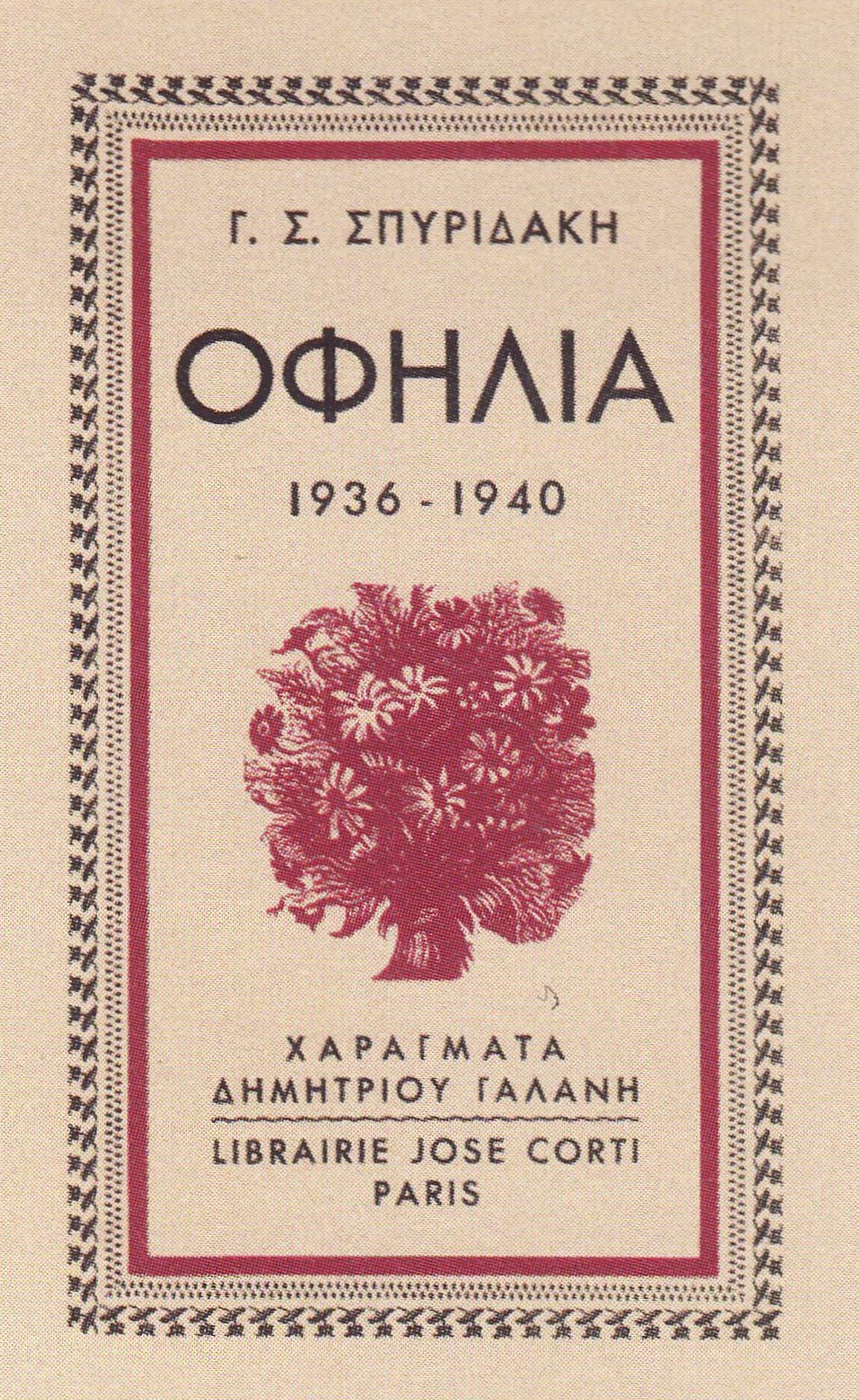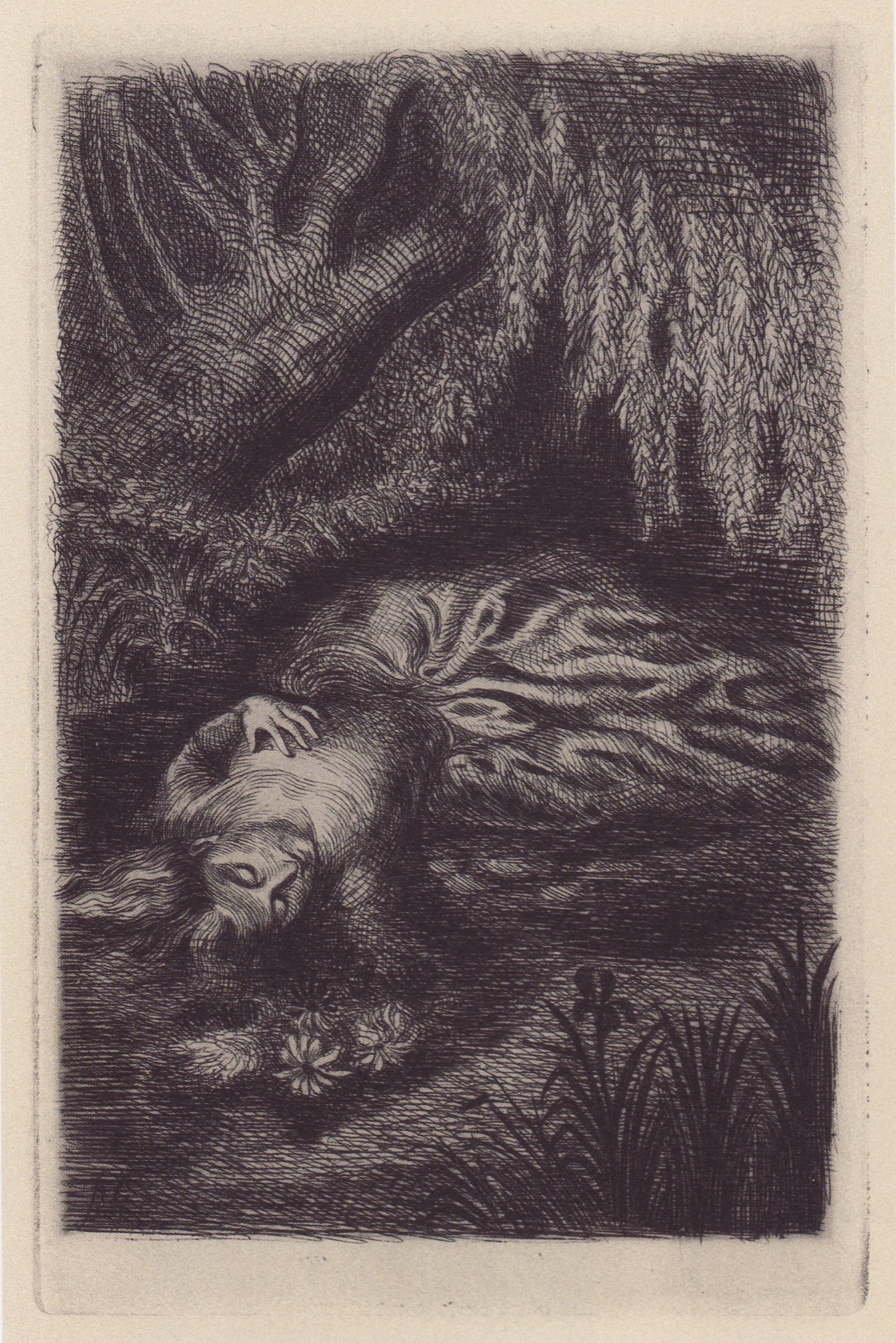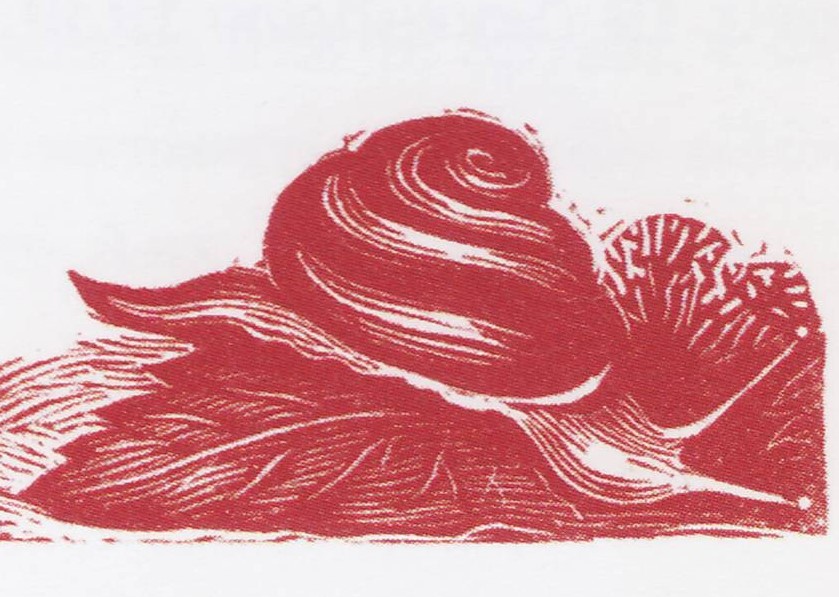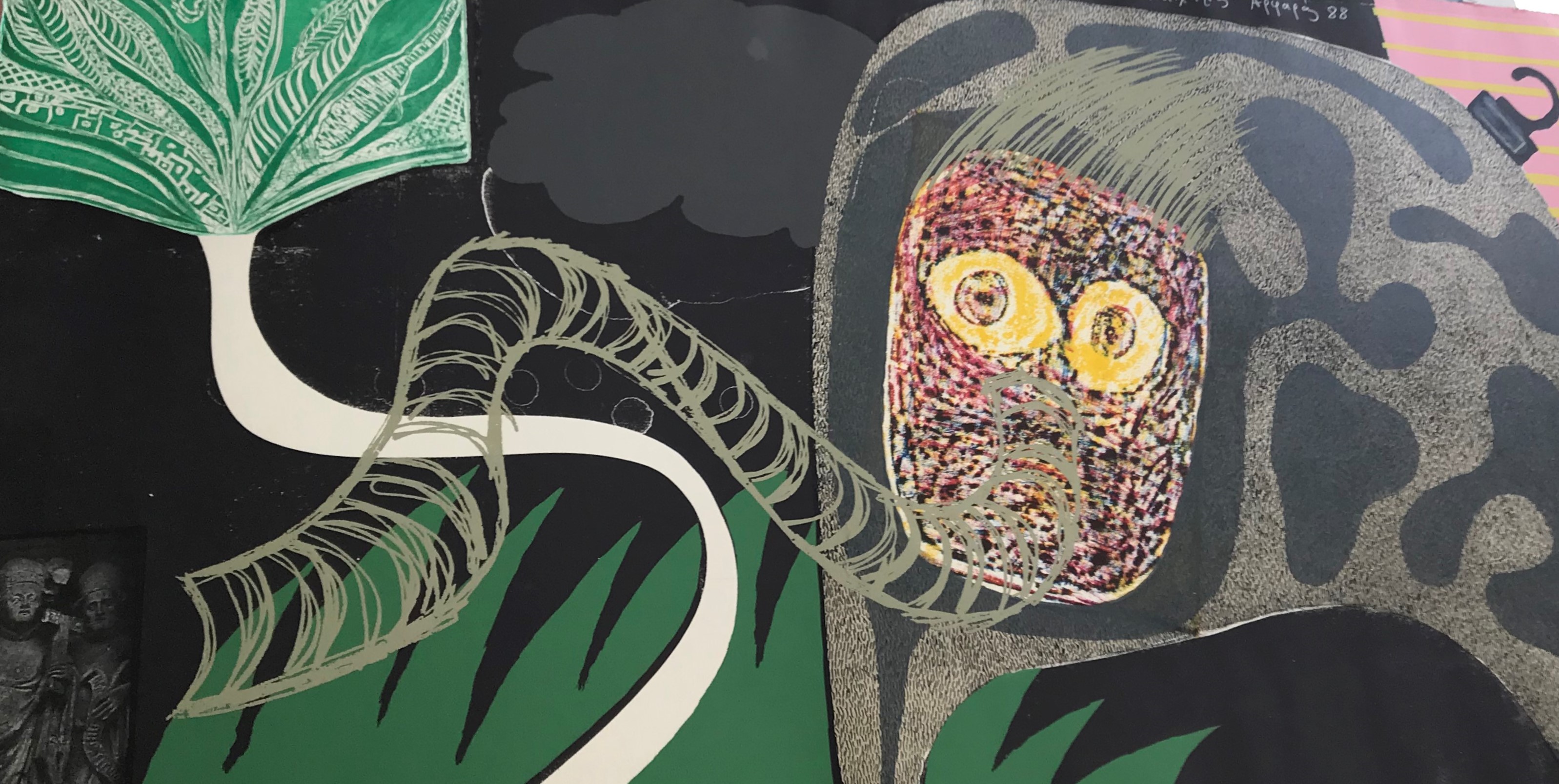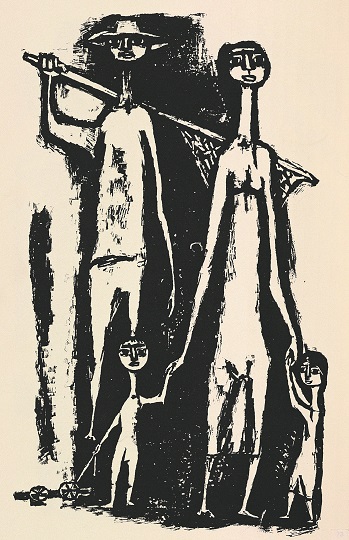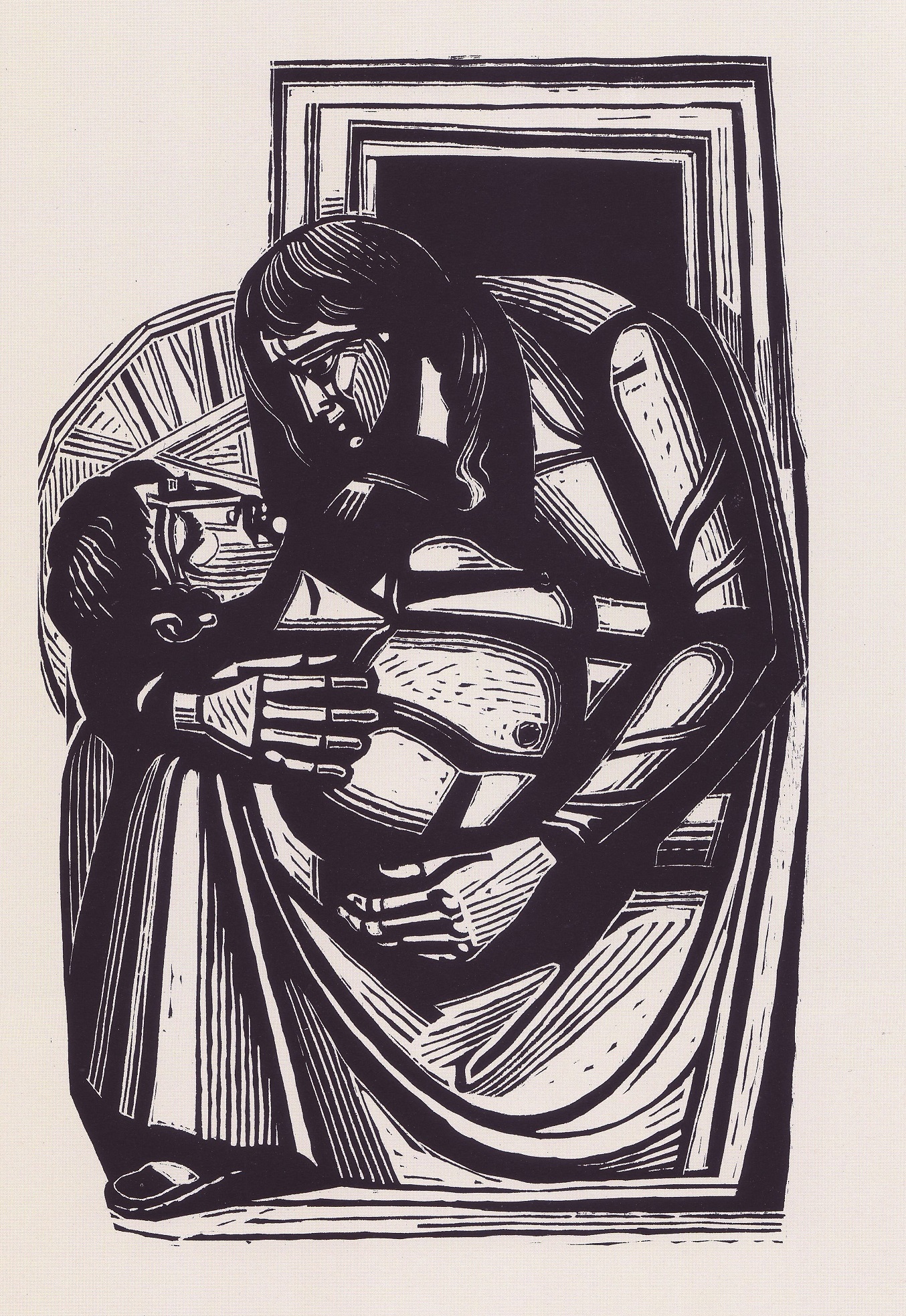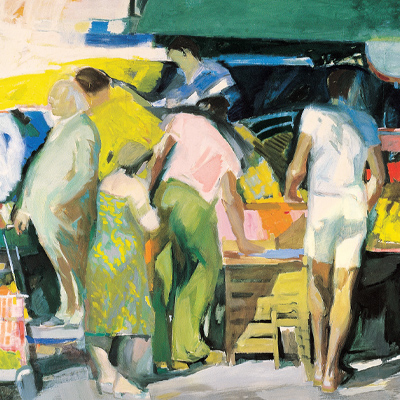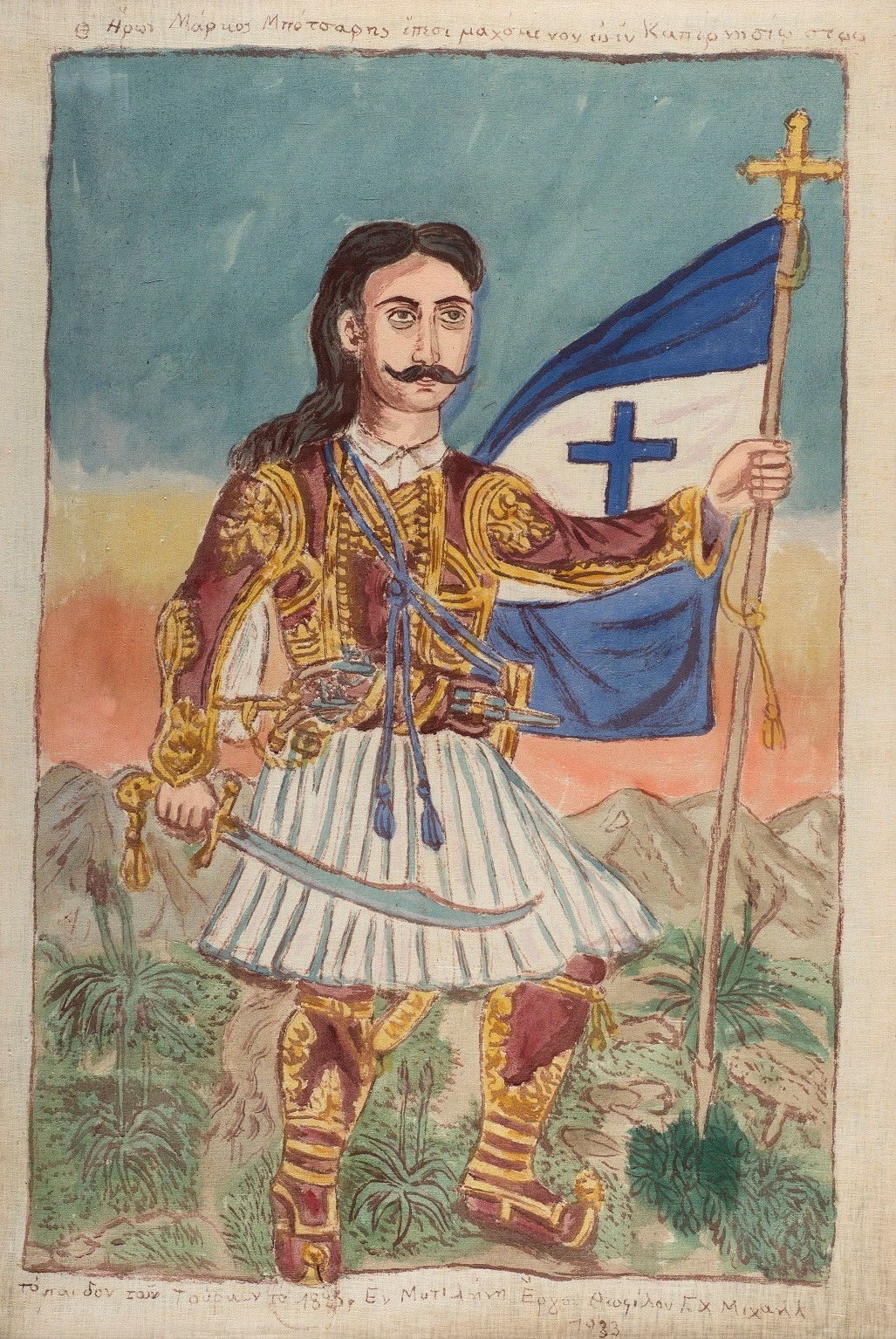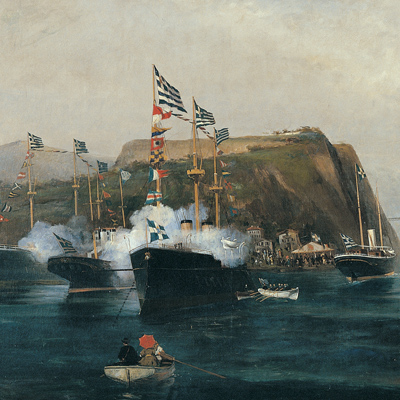Dimitris Galanis, Ophelia (illustration)
The book Ophelia by G.S. Spyridakis is illustrated by the great Greek engraver Dimitris Galanis. It is a rare, artistic edition that belongs to the Alpha Bank Art Collection. The strong appeal of Galanis’ work established engraving as an independent field of the fine arts in Greece.
The cover page
At the centre there is a small composition with flowers, inside a triple decorative frame. The frame includes the book title.
The frontispiece
The full-page aquatint of the frontispiece is very typical of Galanis’ artistic quest.
The theme is the same as the title of the book: Inside a dark, dense forest, on the waters of a river, lies the lifeless body of Ophelia. Her left hand rests on her body and the left one sinks in the water, next to 3 flowers.
The piece is created with great care and detail as evidenced by:
- The calmness on the face of the girl.
- The folds of her dress.
Galanis himself printed the aquatint using Edgar Degas’ press, at his studio in Montmartre.
The decoration of the inside pages
Galanis created approximately 30 decorative woodcuts for the pages of the book.
Among the book pages there are small headpieces, meaning decorations printed in the blank space at the beginning of a chapter. There are also footers and vignettes. Everything is designed entirely in red ink.
His life in a nutshell
Dimitris Galanis (1879-1966) was born in Athens. From 1897 to 1899 he studied at the School of Civil Engineering, National Technical University of Athens. There he also attended drawing classes under the great painter and teacher Nikiforos Lytras.
In 1900 he moved to Paris where he studied at the École des Beaux-Arts on scholarship.
Until 1912 he published satirical drawings in different French magazines (Le Rire, Assiette au Beurre, Frou-Frou).
His interest in engraving had started to unfold as early as 1907-1909. It was then that he originally started working with woodcuts.
Between 1930 and 1937 he taught engraving to Greek artists studying in Paris, such as Nikos Hadjikyriakos-Ghikas, at his workshop.
Artistic influences
His stay in Paris had a decisive impact on the artist. There he had the opportunity to follow artistic developments and eclectically adopt some of them, such as Cubism.
He found himself in the same circles as great painters of the time, including Pablo Picasso, Henri Matisse, Georges Braque, and André Derain.
Favourite themes
Galanis mostly worked with still life. He later turned to landscapes, nudes and mythological themes.
When he focused his professional activities to book and album illustrations, he ventured into many more thematic areas.
Artistic style
Dimitris Galanis is considered one of the first European engravers to create cubist prints. His work stands out for the quality and unique character of his linear representations.
During the 1930s, together with other artists, he revisited a more academic, descriptive and detailed artistic style. In this manner, he clearly adapted his personal style to more classical themes.
A recognised artist
Galanis presented his work in solo exhibitions and also participated in group exhibitions in Paris, in important European and American centres, and in Egypt.
His first exhibition in 1928 at Iliou Melathron in Athens essentially introduced the art of engraving to the public. His works became a point of reference at least for the next 20 years.
In 1945 he was appointed professor of Engraving at the École des Beaux-Arts in Paris and became a member of the Académie Française. In 1949 he became a member of the Academy of Athens.
The founder of engraving
Dimitris Galanis is considered an important teacher and the undeniable founder of engraving in Greece. He influenced the younger generations of Greek engravers more than anyone. For many decades, in works of different artists, it is possible to detect elements and influences from Galanis’ work.
But his most important gift to engraving was giving it its independence. The decade 1925-1935 was the period when engraving became truly autonomous.
Owing to his charisma, in 1932 the chair of Engraving was reinstated at the Athens School of Fine Arts, after being eliminated in 1914.
Galanis in the Alpha Bank Art Collection
The Alpha Bank Art Collection features a large number of books illustrated by Dimitris Galanis. These are French and Greek publications. For these books, Galanis created:
- Cover pages.
- Small decorative designs, the so-called vignettes.
- Historiated initials and frontispieces.
The Art Collection also features the floral print Les Marguerites (The Daisies), a rare monoprint by this great engraver. Moreover, the Alpha Bank Library includes The Comedies, Histories and Tragedies of Shakespeare in its collection of rare publications. The book is illustrated by the same artist.
A rare find
The book Ophelia by G.S. Spyridakis was published in 125 copies in total. The Alpha Bank Art Collection features copy number 124.
It was printed at the Daupeley-Gouverneur printing house at Nogent-le-Rotrou in Northern France, on Vélin d’Arches teinté paper.
Bibliographical references
Dimitris Galanis’ illustrations of the book Ophelia by G.S. Spyridakis are referenced in the following publications:
- D. Galanis’ Printing and Painting, by E. Mavrommatis (Doctoral Thesis, 1983).
- Dimitris Galanis. The Illustrated Books, National Bank of Greece Cultural Foundation, 2014. The publication accompanied the same-titled exhibition co-hosted by the National Bank of Greece Cultural Foundation and Alpha Bank. It is the most complete catalogue of publications illustrated by Dimitris Galanis.
Buy the publication Dimitris Galanis. The Illustrated Books on the Alpha Bank eshop (only available in Greek).
The Alpha Bank Art Collection is not open to the public.
Research visits to the Art Collection can be organised upon request.
Contact us to book your visit.
